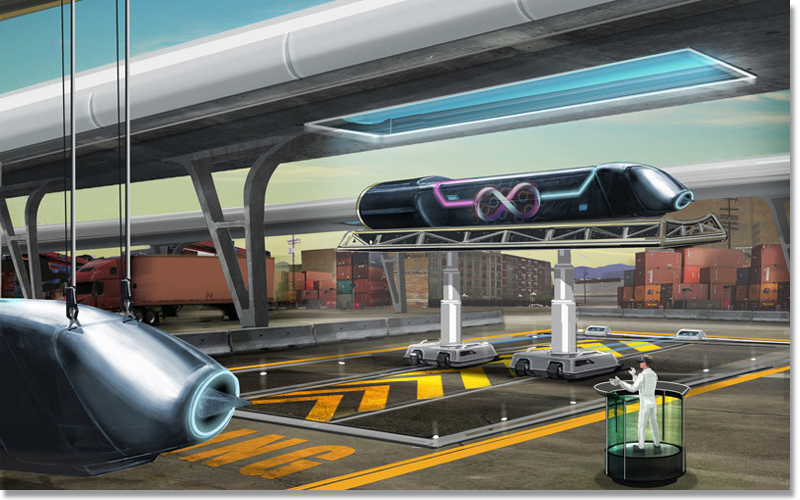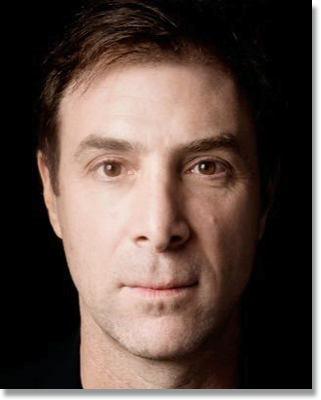Moscow Explores Hyperloop One’s On-Demand Commuter Transportation System

Hyperloop One’s on-demand transportation system could give Moscow's capital region commuters weeks of their lives back by moving them out of cars and into Hyperloop One vehicles gliding at speeds north of 400 mph in low-pressure tubes powered by quiet electric propulsion.
Moscow this week signed an agreement with Los Angeles-based company Hyperloop One to explore building a futuristic, high-speed transportation system known as a Hyperloop in the Russian capital.
A Hyperloop involves using magnets to levitate pods inside an airless tube, creating conditions in which the floating pods could shuttle people and cargo at speeds of up to 750 mph (1,200 kph).
“Hyperloop can improve life dramatically for the 16 million people in the greater Moscow area, cutting their commute to a fraction of what it is today,” Shervin Pishevar, co-founder of Hyperloop One, said in a statement.
“Our longer term vision is to work with Russia to implement a transformative new Silk Road: a cargo Hyperloop that whisks freight containers from China to Europe in a day,” he said.
Hyperloop One Chief Executive Officer Rob Lloyd said it is unclear how much it will cost to build a Hyperloop in Moscow, and the system would not necessarily travel at its top speed in a metropolitan area like Moscow.
A memorandum of understanding was signed at the St. Petersburg International Economic Forum by Hyperloop One, the city of Moscow and Russian firm The Summa Group, which invests in infrastructure projects.
Hyperloop One, which is backed by venture capital and railway investors, now has feasibility studies under way in Finland, Sweden, The Netherlands, Switzerland, Dubai, the Port of Los Angeles and the United Kingdom, Pishevar said.
The Hyperloop concept originated in a paper by Tesla Motors Chief Executive Officer Elon Musk in 2013, who envisioned it whisking passengers from Los Angeles to San Francisco in 30 minutes.
There are currently no functioning Hyperloops anywhere in the world, and skeptics wonder if the technology can ever make the leap from science fiction to reality.
To successfully transport passengers, designers will have to overcome challenges including motion sickness and public fear of traveling at high speeds in a sealed tube.
Despite the challenges, Hyperloop One’s Lloyd last month said the company will build a system capable of transporting cargo by 2019 and passengers by 2021.
It is unclear where the first Hyperloop One project will be built. The company has set up a competition asking people to submit ideas for areas of the world where a Hyperloop could meet a region’s transportation needs. Since the competition was announced last month, the company has received more than 225 registrants from 45 countries.
Moscow Becomes Fourth Site To Pursue Hyperloop One Network
By Bruce Upbin, Hyperloop One
The Russians were first to space with Sputnik and could be first again to transonic travel with the Hyperloop. Last week Hyperloop One and Russian holding company the Summa Group struck an agreement with the city of Moscow to explore building Hyperloop One systems in Russia’s capital region.
The feasibility study is the next step toward developing a bankable plan and a rights of way that would get the funding to become Russia’s first Hyperloop. The deal was signed at the St. Petersburg Economic Forum by Moscow mayor Sergey Sobyanin, Summa Group chairman Ziyavudin Magomedov and Hyperloop One chairman and cofounder Shervin Pishevar.
Moscow is a city of 16 million with legendary traffic congestion and rents out of reach for many citizens. Hyperloop One’s on-demand transportation system could give capital region commuters weeks of their lives back by moving them out of cars and into Hyperloop One vehicles gliding at speeds north of 400 mph in low-pressure tubes powered by quiet electric propulsion. People could live affordably outside the city yet still get to work downtown in minutes.
The deal with the city of Moscow marks Hyperloop One’s fourth to date. Project scoping studies are underway in Finland, the United Kingdom, and the United States. Engineering work is underway at a smooth clip and we’re still aiming for “Kitty Hawk” later this year: that moment when we demonstrate a complete system with pod, track, tube, non-contact levitation and propulsion in a vacuum (and braking).
Looping The New Silk Road
Summa Chairman Magomedov, a billionaire industrialist with infrastructure holdings across Russia, sees an equal and potentially far bigger opportunity to use freight Hyperloop networks. Summa’s portfolio includes ports, telecom, energy and mining. Its Caspian VC investment group has a stake in Hyperloop One. “The implementation of Hyperloop technology provides tremendous benefits to the Russian Federation in terms of the geopolitical development of the intracontinental transit potential and building of an economically attractive alternative to the existing global logistics flows,” says Magomedov.
In the long term Hyperloop could catalyze the development of regional economic integration, including the Eurasian Economic Union and the Chinese initiative “One Belt - One Road.” The initiative, often called the New Silk Road, is China’s grand vision of connecting through Central Asia to Europe through dedicated rails, highways and shipping lanes, providing all the infrastructure in between.
Russian transportation minister Maksim Sokolov, also at the St. Petersburg Economic Forum, found what he says is a promising first location for Russia’s first Hyperloop: a 70-kilometer run between China’s mineral and manufacturing heavy Jilin province and Zarubino, a port on Russia’s Far Eastern coast. Zarubino still has a bucolic feel to it. Fifteen years from now, with decent global trade growth and a warming climate, Zarubino could grow into a bustling Hyperloop terminal - free of truck pollution- - where Jilin carmakers ship containers of finished automobiles at cruising speeds of 700 mph to port-side cranes to be lifted onto ships for export.
Sokolov intends to co-fund the project with the Chinese. “We have a fund to support the Silk Road projects. I believe that this project may count on 100% co-financing from this fund,” he said. Discussions with the federal government are underway for a second feasibility study, with an agreement expected later this year.
Russian news site RT.com quoted Sokolov saying that a 70-kilometer cargo Hyperloop in Russia’s Far East would cost $450 million to $607 million, less than half the price per mile of the 770-kilometer high-speed rail link planned between Moscow and Khazan that’s expected to cost $15 billion.
Source: Hyperloop One
Article Topics
Virgin Hyperloop One News & Resources
US Transportation Secretary Launches Council to Support Emerging Transportation Technology Hyperloop One’s Full-Scale Pod Reaches 192 mph Hyperloop Commercial Feasibility Analysis Hyperloop One Unveils its Transportation Vision for America, Details 11 Routes and Global Challenge Dubai to Prototype World’s First Hyperloop One Transport System by 2020 Moscow Explores Hyperloop One’s On-Demand Commuter Transportation System Hyperloop Alpha More Virgin Hyperloop OneLatest in Transportation
Ranking the World’s 10 Biggest Supply Chains The Top 10 Risks Facing Supply Chain Professionals Walmart’s Latest Service: Ultra Late-Night Delivery City of Baltimore Files Lawsuit to Recoup Money for Collapsed Bridge The Era of Self-Driving Tractor-Trailers Set to Begin Is the Trailers as a Service (TaaS) Model Right For Your Business? Why Grocery Shoppers are Leaving Stores to Buy Their Food Online More Transportation















